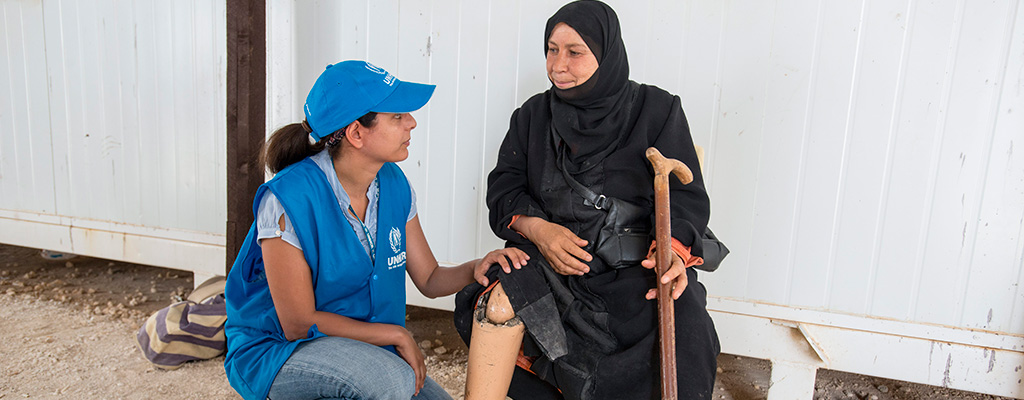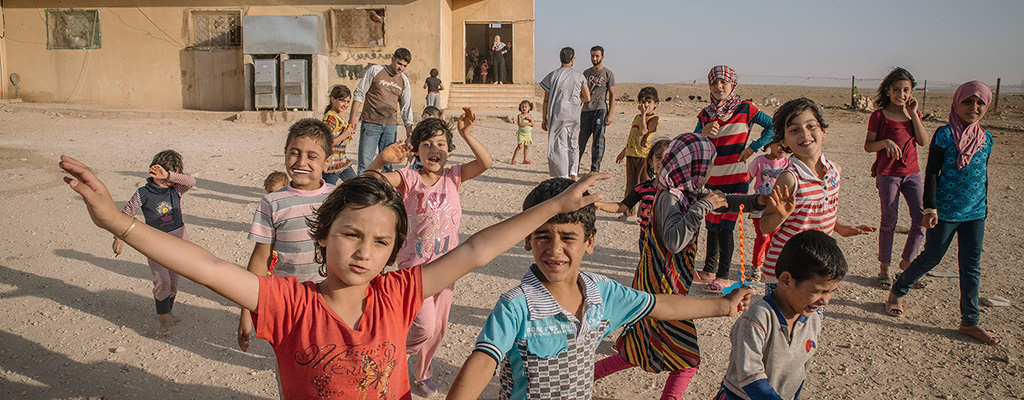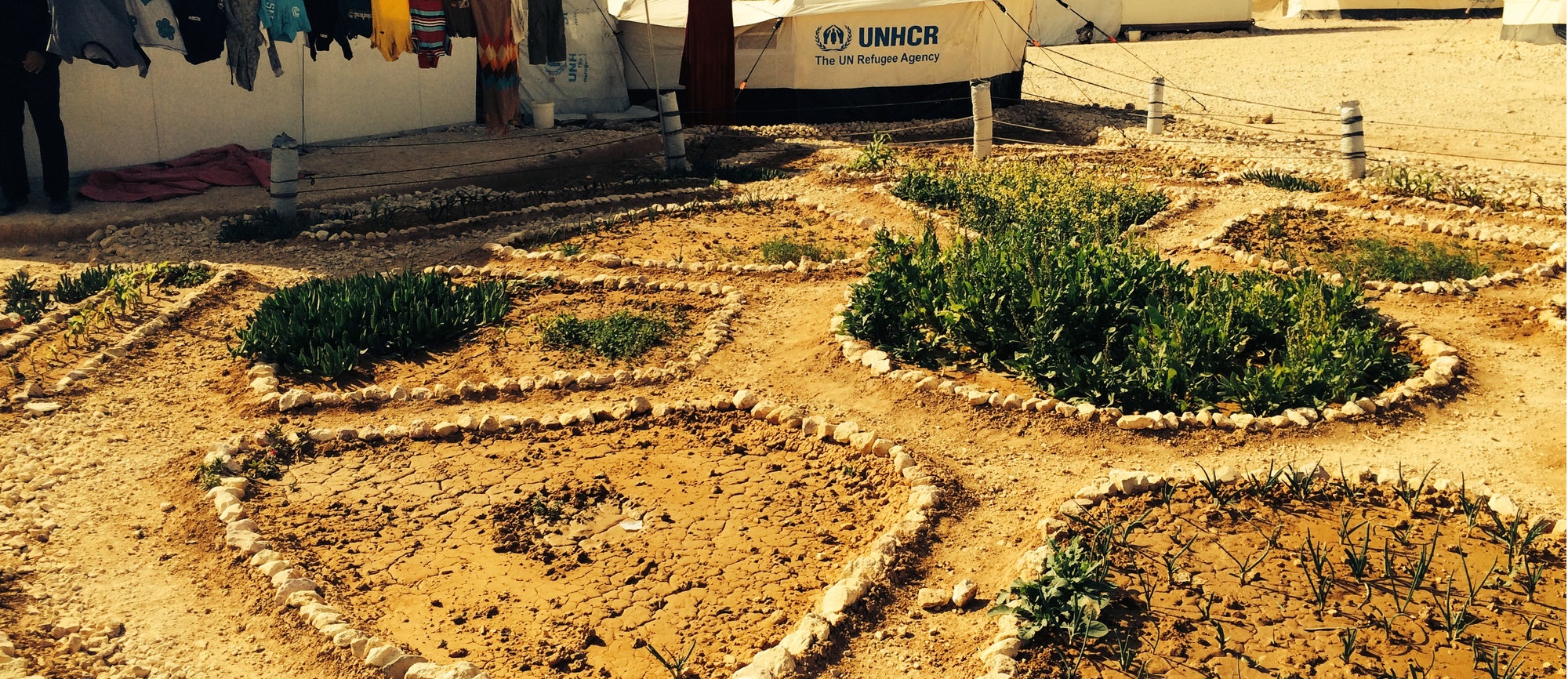1. Define challenges
Coordinating assistance in an urban context, across multiple countries
Four million people have fled from Syria since the civil war erupted in the country in 2012. With each new day that arrives, more men, women and children find themselves having to abandon their homes for the unknown. Their forced exodus has become one of the largest since WWII, and while their individual needs are undeniable, taken in combination, they form one of the worst humanitarian crises the world has ever had to face. Responding to their needs is huge task – and one UNHCR leads in five countries. To rise to the challenge, project officers on the ground need to be able to access and update information on any given refugee and the assistance they have received quickly. This is now possible thanks to the latest version of the web-based tool RAIS (Refugee Assistance and Information System). Previously, however, before the first version of RAIS was developed in 2010, the story was a different one.
Helping just one single refugee is a complex process. It requires various referrals, communication between a multitude of partners, and records detailing what assistance was provided when and by whom. Helping thousands of refugees is even more complicated, yet that was the task UNHCR faced in Jordan, when Iraqi refugees fled to the kingdom to escape the violence in their own country. These Iraqi refugees settled in cities, amongst Jordanians and other permanent residents. A multitude of different NGOs provided them with assistance. But coordination between the various organizations was lacking. Refugee case files were scattered, divided between various paper documents, and numerous Excel sheets. Sometimes one refugee would be registered twice, as two different beneficiaries by two different NGOs. Other times a refugee would have to wait longer than necessary before obtaining assistance because it was unclear what they had previously received.

2. Identify solutions
A database for refugee assistance
RAIS changed that. The online system was developed in 2010 by UNHCR-Jordan. Initially, creating a database on refugee assistance online raised some concerns regarding data protection, but it quickly became clear that having a secured centralized system was much safer than sending Excel files repeatedly via email. Furthermore, RAIS gave UNHCR what the agency had been missing. Thanks to the new system, keeping track of assistance provided to the approximately 50,000 registered Iraqi refugees began happening automatically, every time a new piece of information was entered. By the end of 2010, more than 50 implementing and operational partners were subscribed to RAIS in Jordan.

With approximately 75% of Jordan’s refugee population living in urban settings, help desks like this one provide critical information and services to refugees in areas of protection, health, and registration. © UNHCR/Jared J.Kohler
3. Test solutions
Creating an adaptable system for new contexts
Encouraged by this success, it was decided that RAIS should also be used for Syrian refugees. However, there were many more Syrian refugees than there had been Iraqi refugees. As many as 3,000 Syrians were coming into Jordan on a single day during the peak of the civil war. Browsing and adding information took time with the first version of RAIS. More time than was available if UNHCR was going to successfully lead the Syrian crisis response.
In January 2013, UNHCR MENA Bureau therefore decided to overhaul RAIS. The goal was to design a tool that, like its predecessor, was generally applicable rather than customized to a specific context. Indeed, the second version of the tool that had been designed in response to the Iraqi refugee situation in Jordan was to become one that was internationally useful, so that it could it be applied to different refugee groups in different contexts.
There are important differences between refugee situations within Egypt, Lebanon, and Jordan. In Egypt and Lebanon, for instance, Syrian refugees live only in urban settings. But Jordan has also had to erect camps to deal with the influx, such as the Zaatari refugee camp, which has a current population of over 80,000 and is gradually evolving into a permanent settlement. Assisting refugees living in a camp is entirely different to assisting refugees living amongst urban populations, and a system that could be used in the different countries needed to be able to deal with the different contexts.

4. Refine solutions
Identifying refugees' common needs
The first step in designing the second version of RAIS was identifying the three countries’ common needs. Whether a refugee arrives in Jordan, Lebanon or Egypt, UNHCR’s mission remains the same. Consequently, the function RAIS needs to fulfill – to help plan and record assistance provided to refugees, and thus enable officers to find solutions with maximum impact – also remains the same across regions.
Following numerous close consultations with operations, a total of eight common needs were identified in this step. Only a few of these had been covered by the old version of RAIS, which had just two modules. The new RAIS features ten modules. These include a smart search function to find and check refugee profiles; an improved referral system to facilitate communication between partners; an enhanced reports system for keeping track of assistance; mobile data collection so that information gathered during house visits can be uploaded immediately; and a service to manage the appeal for refugee assistance.

5. Scale solutions
A global and more efficient online tool
As the new RAIS was designed incrementally, with small adjustments being made with every step, and continuous development between the releases of modules, no major revisions of the system required at any point. The finished product was rolled-out in Lebanon in 2014, and in Egypt in 2015.
Some stakeholders have complained the new online tool does not cover every one of their specific needs. However, this was a trade-off to ensure that the RAIS remains a global tool, one that allows decisions about what kind of assistance needs to be provided to a refugee next can be made much more quickly – and with a better overview. Indeed, the new version has become a sort of flagship product representing the leadership role of UNHCR in the refugee response in both Jordan and Lebanon, and it could be rolled-out to further countries if necessary.
To date, RAIS is being used by more than 200 implementing and operational partners in Jordan, Egypt, and Lebanon. Already the system has helped to help over 1.6 million displaced peoples within the three countries: over 90,000 in Egypt, 815,000 in Jordan, and 600,000 in Lebanon. That number increases every day.








